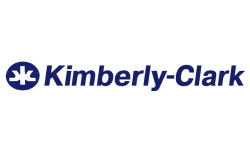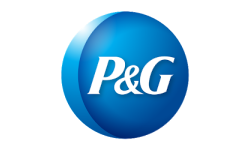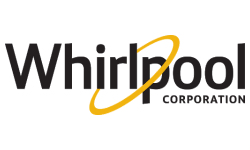
Global Baby Oil Market by Type (Olive Oil, Mustard Oil, Tea Tree Oil, Almond Oil, Castor Oil, Chamomile Oil, Others), By Application (Convenience Stores, Hypermarkets or Supermarkets, E-Commerce, Specialty Stores, Others) and Region (North America, Latin America, Europe, Asia Pacific and Middle East & Africa), Forecast To 2028
The Global Baby Oil Market size is projected to grow at a CAGR of around 2.0% over the next five years, reaching approximately USD 622.6 million by 2028. Market growth will be driven primarily by the rise in disposable incomes and increased usage of baby oils for skincare purposes globally.
Baby oil is a type of oil, typically made from petroleum or plant oils. It's primarily used for babies, either as an emollient to help with dry skin and other conditions such as eczema; also used after bathing in order to keep the baby fresh and moisturized. Baby oils are available both scented and unscented. Baby oils are essential for newborn care. They provide a protective layer over the baby's skin, which protects it from external agents such as dust particles and other allergens that might cause rashes or irritation to its delicate skin. These products also help maintain good hygiene by preventing bacteria buildup on the infant’s body parts. Moreover, these act as an excellent lubricant for a diaper change and bowel movements during infancy when necessary.
On the basis of Type, the global baby oil market is segmented into Olive Oil, Mustard oil, Tea Tree Oil, Almond oil, Castor oil, Chamomile Oil, and Others.
Olive Oil:
Olive Oil type of baby oil is a blend that contains olive oil, vitamin E, and other essential oils. Olive Oil helps to keep the skin moisturized and soft which prevents cracking or scaling on the infant’s body parts including feet, hands, and elbows.
Mustard Oil:
Mustard Oil contains mustard seeds and other essential oils that help to keep the skin moisturized and soft. It has been used on infants for centuries because it protects against diaper rash, dryness, chafing of sensitive skin areas such as elbows and knees due to rubbing with clothes or crawling surfaces; and has a tendency to reduce the odor of diaper as well. The oil contains mustard seeds and can be purchased at convenience stores, hypermarkets or supermarkets, e-commerce sites, specialty stores, and others.
Tea Tree Oil:
The use of Tea trees oil promotes healthy growth by restoring moisture levels in the body tissues. Moreover, this helps in soothing inflammation caused by rashes or burns while promoting healing at the same time. Tea tree oil can be identified by its strong camphor-like odor. It is extracted from the leaves of the "tea tree" plant, which grow in subtropical regions around Australia and South Africa. The tea tree has been used for centuries as a topical treatment to heal sores or cuts on the skin. More recently it's also been found that tea tree oil may help relieve symptoms associated with certain types of acne, including blackheads and whitehead lesions caused by bacteria called Propionibacterium acnes.
Almond Oil:
Almond oil is another type of Baby Oils available globally, which is extracted from the seeds of almond trees. Almond oil is rich in vitamins, minerals, and fatty acids that are important for skin health. Almond oil is extracted from the kernels of almonds, which are sour in taste and smell. It has been traditionally used for cosmetic or skincare purposes to prevent dryness, but also to combat aging signs on the skin like wrinkles and dark spots. This type of baby oil can be identified by its rich texture that resembles a paste more than liquid oil when applied topically.
Castor Oil:
Castor oil is a type of Baby Oil that is extracted from the seeds and roots of castor plants. It has traditionally served to improve blood circulation but also for beauty purposes such as hair care and skincare. This type of baby oil can be identified by its thick texture when applied topically on dry skin because they are viscous liquids with an odor similar to sulfur due to their high concentration of unsaturated fatty acids mostly oleic acid- about 90-95%.
Skincare experts recommend castor oil as an option for people with dry skin, given its moisturizing effect. Castor oil can work to relieve symptoms of atopic dermatitis by reducing inflammation and improving the barrier function of the skin. Castor Oil has also been shown in studies to protect against UV radiation because it contains antioxidant properties that may help stabilize free radicals created from exposure to sunlight; this means that when applied topically on the skin, it may have protective effects against sunburns or other damage due to ultraviolet rays such as wrinkles and precancerous lesions. In addition, some research suggests that the application of Castor Oil immediately after a burn could reduce pain severity while preventing blister formation and tissue loss.
Chamomile Oil:
The Chamomile Oil type of baby oil is a type of Baby Oil that contains the extracts from the flowers and leaves in chamomile. The extract is often used for its soothing effects on babies with cradle caps, diaper rash, or skin irritation due to eczema when applied topically onto their affected areas. Chamomile requires hot water extraction so that when mixed with your infant’s bath its soothing effects will provide relief against eczema conditions. In addition, it can also be mixed into the bathwater as an aid to help soothe them during times they are sick or have difficulty sleeping because of colic.
On the basis of Application, the global baby oil market is segmented into convenience stores, Hypermarkets or Supermarkets, E-Commerce, and others.
Convenience Stores:
The application for baby oil in convenience stores is to sell it as a beauty product. When people are running errands, they might want to get their nails done or buy some essentials and also pick up some nail polish remover or body lotion while they're there. Baby oil can be found next to the other items on the shelf with similar purposes such as foot cream, hand sanitizer, etc. so that shoppers who need these products will see them when walking around the store looking for something else.
Hypermarkets Or Supermarkets:
Baby oils are used by customers to remove makeup and ease tension on their face, but also as natural protection against UV rays during the summertime that can be found at this type of store. The application of baby oil also benefits Hypermarket or supermarket retailers because it becomes an essential part of customer experience in such establishments.
E-Commerce:
The E-Commerce applications of baby oil are growing rapidly. Consumers have plenty of options to buy the product online. It is easy for them to find their desired products from different brands and other sellers in less time, which saves both money and time.
On the basis of Region, the global baby oil market is segmented into North America, Latin America, Europe, Asia Pacific, and Middle East & Africa. North America region is expected to dominate the global market owing to higher penetration rates of baby oils in this area. It would also have a positive impact on demand for oil from other regions as there are many manufacturers dealing with exports from North American countries into different geographies worldwide. Asia Pacific growth prospects across the region will be driven primarily due to increasing disposable income levels coupled with an upsurge in population. In the Middle East & Africa, with the massive growth of disposable incomes in this region, baby oil consumption is expected to rise further with time. The increasing number of women entering the workforce will also contribute to the rising demand for baby oils across countries in the Middle East and Africa.
Growth Factors For The Global Baby Oil Market:
The growth of the market can be attributed to factors such as increasing demand for organic baby oils, rising consumer awareness about the benefits of using natural oils in their babies' care regimen, growing penetration rates in emerging economies due to increased disposable income, and growing population base, etc. Growing incidences of skin issues among babies are also leading consumers towards natural products that help them treat these problems without causing side effects on their kids' sensitive skins. These aspects have been driving growth prospects across various geographical regions worldwide including North America, Latin America, Europe, and Asia-Pacific.
Up Market Research published a new report titled “Baby Oil Market research report which is segmented by Types (Olive Oil, Mustard Oil, Tea Tree Oil, Almond Oil, Castor Oil, Chamomile Oil, Others), By Applications (Convenience Stores, Hypermarkets or Supermarkets, E-Commerce, Specialty Stores, Others), By Players/Companies Chicco, Johnson & Johnson, Pigeon, Dabur, Farlin, Himalaya Drug Company, Sebapharma”. As per the study the market is expected to grow at a CAGR of XX% in the forecast period.
Report Scope
| Report Attributes | Report Details |
| Report Title | Baby Oil Market Research Report |
| By Type | Olive Oil, Mustard Oil, Tea Tree Oil, Almond Oil, Castor Oil, Chamomile Oil, Others |
| By Application | Convenience Stores, Hypermarkets or Supermarkets, E-Commerce, Specialty Stores, Others |
| By Companies | Chicco, Johnson & Johnson, Pigeon, Dabur, Farlin, Himalaya Drug Company, Sebapharma |
| Regions Covered | North America, Europe, APAC, Latin America, MEA |
| Base Year | 2020 |
| Historical Year | 2018 to 2019 (Data from 2010 can be provided as per availability) |
| Forecast Year | 2028 |
| Number of Pages | 218 |
| Number of Tables & Figures | 153 |
| Customization Available | Yes, the report can be customized as per your need. |
The report covers comprehensive data on emerging trends, market drivers, growth opportunities, and restraints that can change the market dynamics of the industry. It provides an in-depth analysis of the market segments which include products, applications, and competitor analysis.

Global Baby Oil Market Report Segments:
The market is segmented by Type Olive Oil, Mustard Oil, Tea Tree Oil, Almond Oil, Castor Oil, Chamomile Oil, Others and By Application Convenience Stores, Hypermarkets or Supermarkets, E-Commerce, Specialty Stores, Others.
Some of the companies that are profiled in this report are:
- Chicco
- Johnson & Johnson
- Pigeon
- Dabur
- Farlin
- Himalaya Drug Company
- Sebapharma
Baby Oil Market research report delivers a close watch on leading competitors with strategic analysis, micro and macro market trend and scenarios, pricing analysis and a holistic overview of the market situations in the forecast period. It is a professional and a detailed report focusing on primary and secondary drivers, market share, leading segments and geographical analysis. Further, key players, major collaborations, merger & acquisitions along with trending innovation and business policies are reviewed in the report.
Key Benefits for Industry Participants & Stakeholders:
- Industry drivers, restraints, and opportunities covered in the study
- Neutral perspective on the market performance
- Recent industry trends and developments
- Competitive landscape & strategies of key players
- Potential & niche segments and regions exhibiting promising growth covered
- Historical, current, and projected market size, in terms of value
- In-depth analysis of the Baby Oil Market
Overview of the regional outlook of the Baby Oil Market:
Based on region, the market is segmented into North America, Europe, Asia Pacific, Latin America and Middle East & Africa (MEA). North America region is further bifurcated into countries such as U.S., and Canada. The Europe region is further categorized into U.K., France, Germany, Italy, Spain, Russia, and Rest of Europe. Asia Pacific is further segmented into China, Japan, South Korea, India, Australia, South East Asia, and Rest of Asia Pacific. Latin America region is further segmented into Brazil, Mexico, and Rest of Latin America, and the MEA region is further divided into GCC, Turkey, South Africa, and Rest of MEA.

Highlights of The Baby Oil Market Report:
- The market structure and projections for the coming years.
- Drivers, restraints, opportunities, and current trends of Baby Oil Market.
- Historical data and forecast.
- Estimations for the forecast period 2028.
- Developments and trends in the market.
- By Type:
1. Olive Oil
2. Mustard Oil
3. Tea Tree Oil
4. Almond Oil
5. Castor Oil
6. Chamomile Oil
7. Others
7. By Application:1. Convenience Stores
2. Hypermarkets or Supermarkets
3. E-Commerce
4. Specialty Stores
5. Others
- Market scenario by region, sub-region, and country.
- Market share of the market players, company profiles, product specifications, SWOT analysis, and competitive landscape.
- Analysis regarding upstream raw materials, downstream demand, and current market dynamics.
- Government Policies, Macro & Micro economic factors are also included in the report.
We have studied the Baby Oil Market in 360 degrees via. both primary & secondary research methodologies. This helped us in building an understanding of the current market dynamics, supply-demand gap, pricing trends, product preferences, consumer patterns & so on. The findings were further validated through primary research with industry experts & opinion leaders across countries. The data is further compiled & validated through various market estimation & data validation methodologies. Further, we also have our in-house data forecasting model to predict market growth up to 2028.
How you may use our products:
- Correctly Positioning New Products
- Market Entry Strategies
- Business Expansion Strategies
- Consumer Insights
- Understanding Competition Scenario
- Product & Brand Management
- Channel & Customer Management
- Identifying Appropriate Advertising Appeals

Reasons to Purchase the Baby Oil Market Report:
- The report includes a plethora of information such as market dynamics scenario and opportunities during the forecast period
- Segments and sub-segments include quantitative, qualitative, value (USD Million,) and volume (Units Million) data.
- Regional, sub-regional, and country level data includes the demand and supply forces along with their influence on the market.
- The competitive landscape comprises share of key players, new developments, and strategies in the last three years.
- Comprehensive companies offering products, relevant financial information, recent developments, SWOT analysis, and strategies by these players.
Chapter 2 Assumptions and Acronyms Used
Chapter 3 Research Methodology
Chapter 4 Baby Oil Market Overview
4.1 Introduction
4.1.1 Market Taxonomy
4.1.2 Market Definition
4.1.3 Macro-Economic Factors Impacting the Market Growth
4.2 Baby Oil Market Dynamics
4.2.1 Market Drivers
4.2.2 Market Restraints
4.2.3 Market Opportunity
4.3 Baby Oil Market - Supply Chain Analysis
4.3.1 List of Key Suppliers
4.3.2 List of Key Distributors
4.3.3 List of Key Consumers
4.4 Key Forces Shaping the Baby Oil Market
4.4.1 Bargaining Power of Suppliers
4.4.2 Bargaining Power of Buyers
4.4.3 Threat of Substitution
4.4.4 Threat of New Entrants
4.4.5 Competitive Rivalry
4.5 Global Baby Oil Market Size & Forecast, 2018-2028
4.5.1 Baby Oil Market Size and Y-o-Y Growth
4.5.2 Baby Oil Market Absolute $ Opportunity
Chapter 5 Global Baby Oil Market Analysis and Forecast by Type
5.1 Introduction
5.1.1 Key Market Trends & Growth Opportunities by Type
5.1.2 Basis Point Share (BPS) Analysis by Type
5.1.3 Absolute $ Opportunity Assessment by Type
5.2 Baby Oil Market Size Forecast by Type
5.2.1 Olive Oil
5.2.2 Mustard Oil
5.2.3 Tea Tree Oil
5.2.4 Almond Oil
5.2.5 Castor Oil
5.2.6 Chamomile Oil
5.2.7 Others
5.3 Market Attractiveness Analysis by Type
Chapter 6 Global Baby Oil Market Analysis and Forecast by Applications
6.1 Introduction
6.1.1 Key Market Trends & Growth Opportunities by Applications
6.1.2 Basis Point Share (BPS) Analysis by Applications
6.1.3 Absolute $ Opportunity Assessment by Applications
6.2 Baby Oil Market Size Forecast by Applications
6.2.1 Convenience Stores
6.2.2 Hypermarkets or Supermarkets
6.2.3 E-Commerce
6.2.4 Specialty Stores
6.2.5 Others
6.3 Market Attractiveness Analysis by Applications
Chapter 7 Global Baby Oil Market Analysis and Forecast by Region
7.1 Introduction
7.1.1 Key Market Trends & Growth Opportunities by Region
7.1.2 Basis Point Share (BPS) Analysis by Region
7.1.3 Absolute $ Opportunity Assessment by Region
7.2 Baby Oil Market Size Forecast by Region
7.2.1 North America
7.2.2 Europe
7.2.3 Asia Pacific
7.2.4 Latin America
7.2.5 Middle East & Africa (MEA)
7.3 Market Attractiveness Analysis by Region
Chapter 8 Coronavirus Disease (COVID-19) Impact
8.1 Introduction
8.2 Current & Future Impact Analysis
8.3 Economic Impact Analysis
8.4 Government Policies
8.5 Investment Scenario
Chapter 9 North America Baby Oil Analysis and Forecast
9.1 Introduction
9.2 North America Baby Oil Market Size Forecast by Country
9.2.1 U.S.
9.2.2 Canada
9.3 Basis Point Share (BPS) Analysis by Country
9.4 Absolute $ Opportunity Assessment by Country
9.5 Market Attractiveness Analysis by Country
9.6 North America Baby Oil Market Size Forecast by Type
9.6.1 Olive Oil
9.6.2 Mustard Oil
9.6.3 Tea Tree Oil
9.6.4 Almond Oil
9.6.5 Castor Oil
9.6.6 Chamomile Oil
9.6.7 Others
9.7 Basis Point Share (BPS) Analysis by Type
9.8 Absolute $ Opportunity Assessment by Type
9.9 Market Attractiveness Analysis by Type
9.10 North America Baby Oil Market Size Forecast by Applications
9.10.1 Convenience Stores
9.10.2 Hypermarkets or Supermarkets
9.10.3 E-Commerce
9.10.4 Specialty Stores
9.10.5 Others
9.11 Basis Point Share (BPS) Analysis by Applications
9.12 Absolute $ Opportunity Assessment by Applications
9.13 Market Attractiveness Analysis by Applications
Chapter 10 Europe Baby Oil Analysis and Forecast
10.1 Introduction
10.2 Europe Baby Oil Market Size Forecast by Country
10.2.1 Germany
10.2.2 France
10.2.3 Italy
10.2.4 U.K.
10.2.5 Spain
10.2.6 Russia
10.2.7 Rest of Europe
10.3 Basis Point Share (BPS) Analysis by Country
10.4 Absolute $ Opportunity Assessment by Country
10.5 Market Attractiveness Analysis by Country
10.6 Europe Baby Oil Market Size Forecast by Type
10.6.1 Olive Oil
10.6.2 Mustard Oil
10.6.3 Tea Tree Oil
10.6.4 Almond Oil
10.6.5 Castor Oil
10.6.6 Chamomile Oil
10.6.7 Others
10.7 Basis Point Share (BPS) Analysis by Type
10.8 Absolute $ Opportunity Assessment by Type
10.9 Market Attractiveness Analysis by Type
10.10 Europe Baby Oil Market Size Forecast by Applications
10.10.1 Convenience Stores
10.10.2 Hypermarkets or Supermarkets
10.10.3 E-Commerce
10.10.4 Specialty Stores
10.10.5 Others
10.11 Basis Point Share (BPS) Analysis by Applications
10.12 Absolute $ Opportunity Assessment by Applications
10.13 Market Attractiveness Analysis by Applications
Chapter 11 Asia Pacific Baby Oil Analysis and Forecast
11.1 Introduction
11.2 Asia Pacific Baby Oil Market Size Forecast by Country
11.2.1 China
11.2.2 Japan
11.2.3 South Korea
11.2.4 India
11.2.5 Australia
11.2.6 South East Asia (SEA)
11.2.7 Rest of Asia Pacific (APAC)
11.3 Basis Point Share (BPS) Analysis by Country
11.4 Absolute $ Opportunity Assessment by Country
11.5 Market Attractiveness Analysis by Country
11.6 Asia Pacific Baby Oil Market Size Forecast by Type
11.6.1 Olive Oil
11.6.2 Mustard Oil
11.6.3 Tea Tree Oil
11.6.4 Almond Oil
11.6.5 Castor Oil
11.6.6 Chamomile Oil
11.6.7 Others
11.7 Basis Point Share (BPS) Analysis by Type
11.8 Absolute $ Opportunity Assessment by Type
11.9 Market Attractiveness Analysis by Type
11.10 Asia Pacific Baby Oil Market Size Forecast by Applications
11.10.1 Convenience Stores
11.10.2 Hypermarkets or Supermarkets
11.10.3 E-Commerce
11.10.4 Specialty Stores
11.10.5 Others
11.11 Basis Point Share (BPS) Analysis by Applications
11.12 Absolute $ Opportunity Assessment by Applications
11.13 Market Attractiveness Analysis by Applications
Chapter 12 Latin America Baby Oil Analysis and Forecast
12.1 Introduction
12.2 Latin America Baby Oil Market Size Forecast by Country
12.2.1 Brazil
12.2.2 Mexico
12.2.3 Rest of Latin America (LATAM)
12.3 Basis Point Share (BPS) Analysis by Country
12.4 Absolute $ Opportunity Assessment by Country
12.5 Market Attractiveness Analysis by Country
12.6 Latin America Baby Oil Market Size Forecast by Type
12.6.1 Olive Oil
12.6.2 Mustard Oil
12.6.3 Tea Tree Oil
12.6.4 Almond Oil
12.6.5 Castor Oil
12.6.6 Chamomile Oil
12.6.7 Others
12.7 Basis Point Share (BPS) Analysis by Type
12.8 Absolute $ Opportunity Assessment by Type
12.9 Market Attractiveness Analysis by Type
12.10 Latin America Baby Oil Market Size Forecast by Applications
12.10.1 Convenience Stores
12.10.2 Hypermarkets or Supermarkets
12.10.3 E-Commerce
12.10.4 Specialty Stores
12.10.5 Others
12.11 Basis Point Share (BPS) Analysis by Applications
12.12 Absolute $ Opportunity Assessment by Applications
12.13 Market Attractiveness Analysis by Applications
Chapter 13 Middle East & Africa (MEA) Baby Oil Analysis and Forecast
13.1 Introduction
13.2 Middle East & Africa (MEA) Baby Oil Market Size Forecast by Country
13.2.1 Saudi Arabia
13.2.2 South Africa
13.2.3 UAE
13.2.4 Rest of Middle East & Africa (MEA)
13.3 Basis Point Share (BPS) Analysis by Country
13.4 Absolute $ Opportunity Assessment by Country
13.5 Market Attractiveness Analysis by Country
13.6 Middle East & Africa (MEA) Baby Oil Market Size Forecast by Type
13.6.1 Olive Oil
13.6.2 Mustard Oil
13.6.3 Tea Tree Oil
13.6.4 Almond Oil
13.6.5 Castor Oil
13.6.6 Chamomile Oil
13.6.7 Others
13.7 Basis Point Share (BPS) Analysis by Type
13.8 Absolute $ Opportunity Assessment by Type
13.9 Market Attractiveness Analysis by Type
13.10 Middle East & Africa (MEA) Baby Oil Market Size Forecast by Applications
13.10.1 Convenience Stores
13.10.2 Hypermarkets or Supermarkets
13.10.3 E-Commerce
13.10.4 Specialty Stores
13.10.5 Others
13.11 Basis Point Share (BPS) Analysis by Applications
13.12 Absolute $ Opportunity Assessment by Applications
13.13 Market Attractiveness Analysis by Applications
Chapter 14 Competition Landscape
14.1 Baby Oil Market: Competitive Dashboard
14.2 Global Baby Oil Market: Market Share Analysis, 2019
14.3 Company Profiles (Details – Overview, Financials, Developments, Strategy)
14.3.1 Chicco
14.3.2 Johnson & Johnson
14.3.3 Pigeon
14.3.4 Dabur
14.3.5 Farlin
14.3.6 Himalaya Drug Company
14.3.7 Sebapharma
The global Baby Oil market has been segmented based on
By Types
- Olive Oil
- Mustard Oil
- Tea Tree Oil
- Almond Oil
- Castor Oil
- Chamomile Oil
- Others
- Convenience Stores
- Hypermarkets or Supermarkets
- E-Commerce
- Specialty Stores
- Others
- Asia Pacific
- North America
- Latin America
- Europe
- Middle East & Africa
- Chicco
- Johnson & Johnson
- Pigeon
- Dabur
- Farlin
- Himalaya Drug Company
- Sebapharma
Related Reports
Some other reports from this category!



















